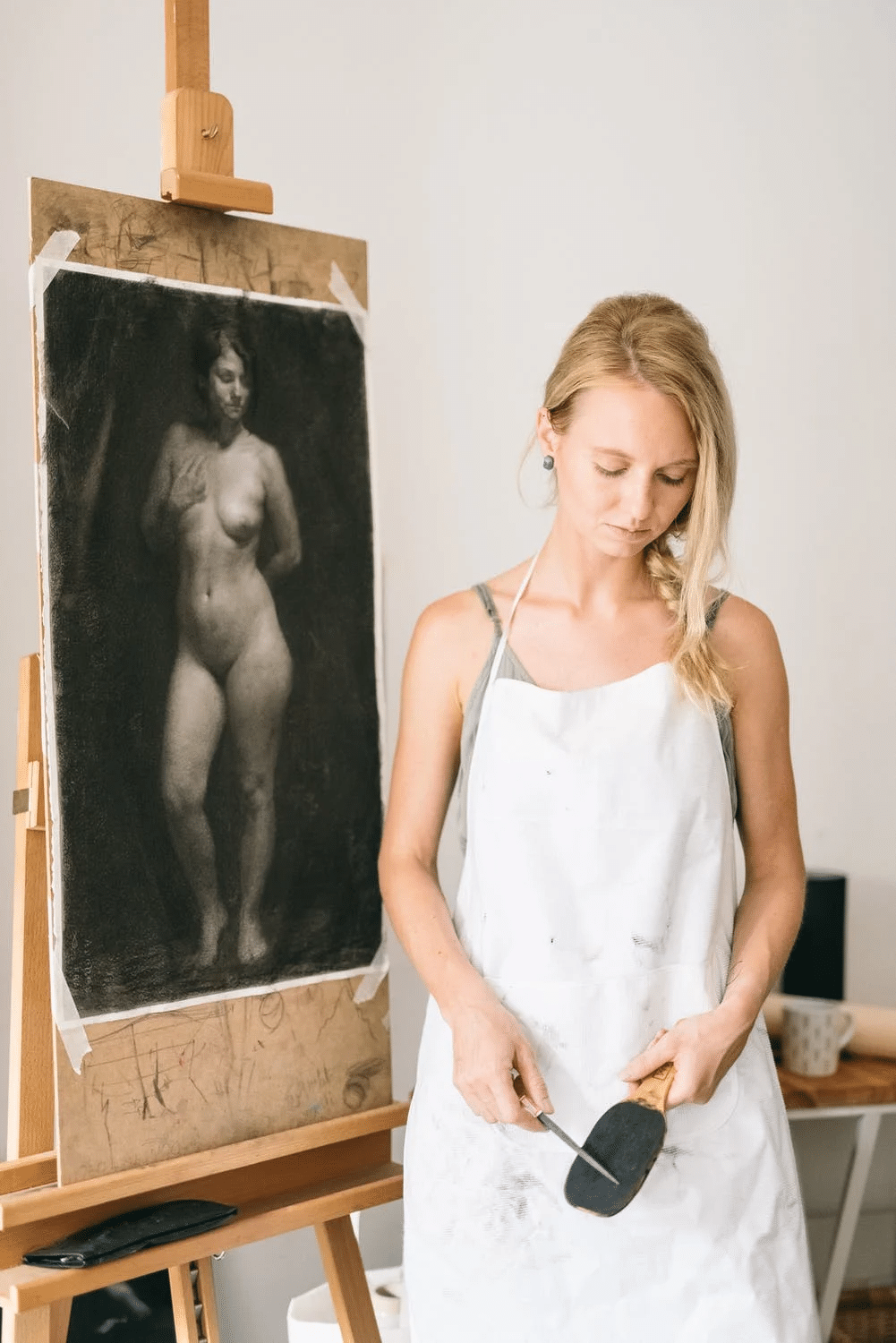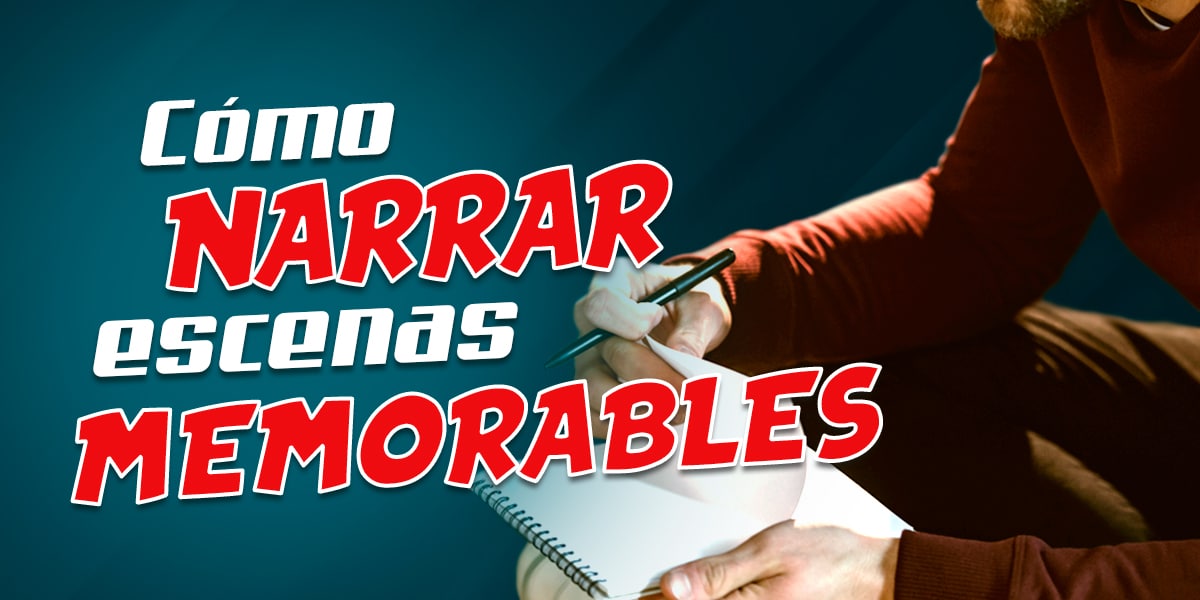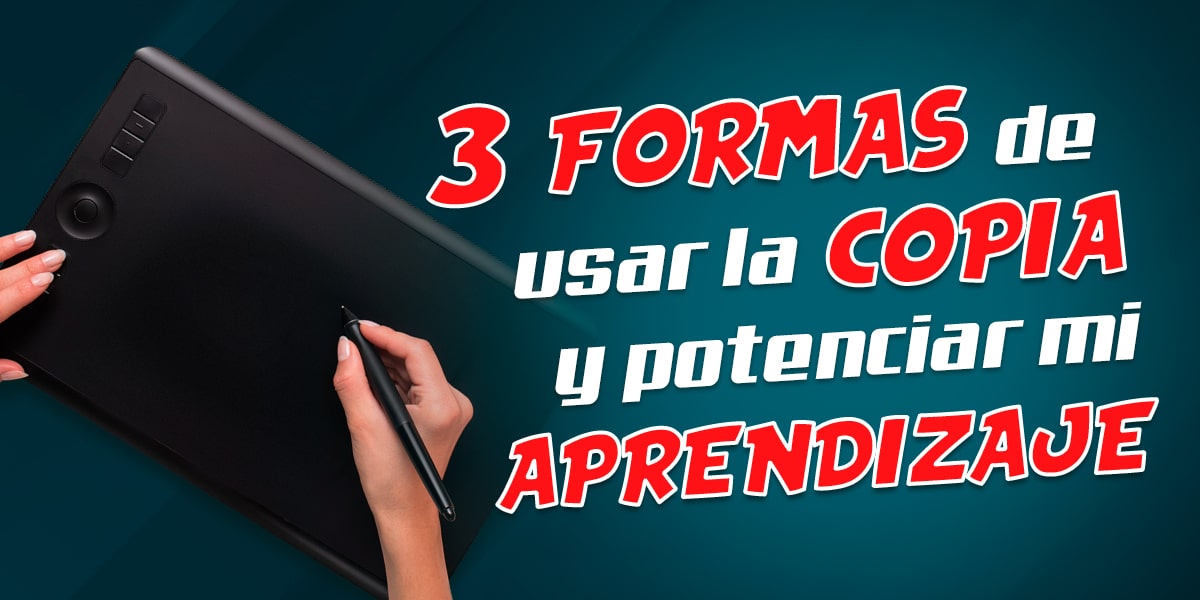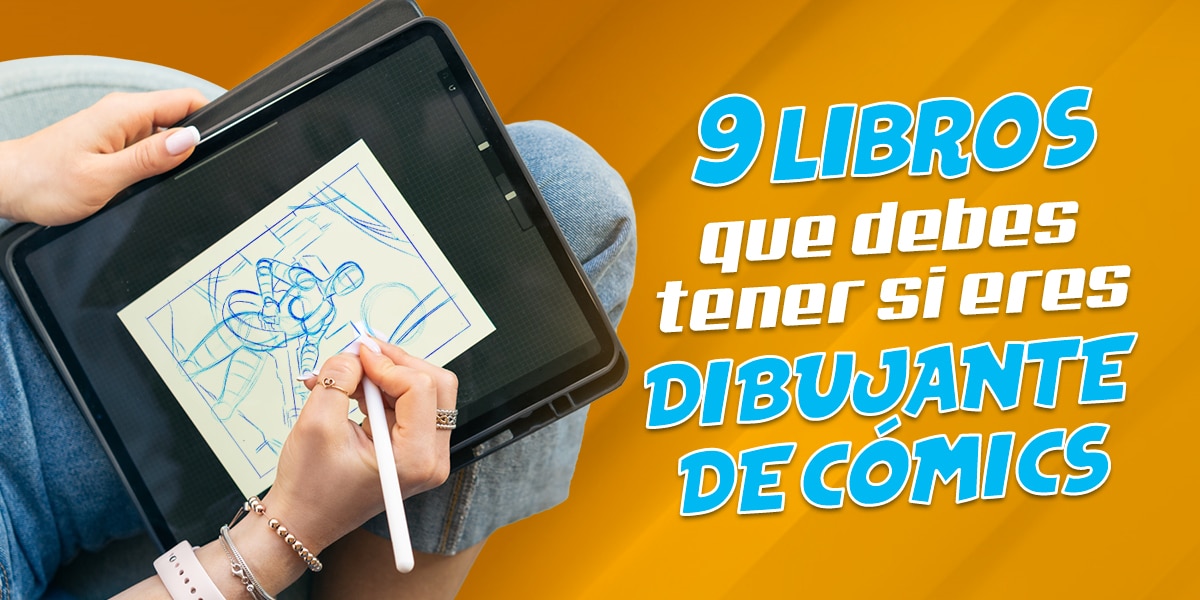5 fabulosos tips para dibujar la figura femenina: Domina el arte de la anatomía
Por Mike Smith
¿Alguna vez te has preguntado cómo capturar la esencia de la figura femenina en tus dibujos? ¿Te has enfrentado al desafío de representar la delicadeza y fuerza de una mujer en el papel? En este artículo, te revelaremos 5 tips geniales para dibujar la figura femenina, abarcando desde el cuerpo en general hasta los detalles más sutiles del rostro, las curvas, los brazos y las piernas.
Prepárate para sumergirte en un viaje fascinante a través de la anatomía femenina y descubrir los secretos que harán que tus ilustraciones cobren vida. ¿Estás listo para llevar tus habilidades al siguiente nivel? ¡Acompáñanos en esta aventura artística!
Dominando las curvas: El secreto para que tu figura femenina cobre vida
El dibujo de la anatomía humana es siempre un desafío emocionante, especialmente cuando se trata de capturar los rasgos únicos de cada individuo. Al enfocarnos en la figura femenina, nos adentramos en un mundo de sutilezas y proporciones que requieren una atención especial.
Cada cuerpo es único, y como artistas, debemos ser sensibles a las variables como el género, la edad y la contextura. Sin embargo, existen ciertos trucos y técnicas que pueden ayudarnos a que nuestras representaciones femeninas sean más auténticas y convincentes.
Es interesante notar que muchos dibujantes tienden a sentirse más cómodos representando cuerpos similares al suyo. Esto puede ser una ventaja natural, pero también un desafío cuando se trata de explorar anatomías diferentes. Si no has nacido con un cuerpo femenino, no te preocupes: estos tips te serán especialmente útiles para expandir tu repertorio artístico.
Antes de sumergirnos en los detalles, es importante hacer una aclaración. En el contexto actual de diversidad y respeto, hablar simplemente de “mujeres y hombres” puede parecer limitado. Por eso, abordaremos el tema desde una perspectiva de espectro, reconociendo la amplia gama de expresiones corporales que existen. Nos referiremos a cuerpos con rasgos más o menos femeninos, entendiendo que la anatomía humana es diversa y fluida.
El lienzo corporal: Comprendiendo las proporciones y la diversidad

Al hablar de la figura femenina, la palabra clave es “curvas”. Un cuerpo con rasgos femeninos tiende a presentar una silueta más redondeada, con caderas generalmente más anchas que los hombros. Esta característica no solo es estética, sino que tiene raíces biológicas relacionadas con la maternidad.
Sin embargo, es crucial recordar que no todos los cuerpos femeninos se ajustan a este estereotipo. La diversidad es la norma, no la excepción. Algunos cuerpos femeninos pueden tener hombros más anchos o una estructura más angular, y eso no los hace menos “femeninos”.
En cuanto a la musculatura, los cuerpos femeninos suelen mostrar una definición más sutil. Incluso en el caso de mujeres atletas o superheroínas, la representación tiende a mantener cierta suavidad en las formas. Esto contrasta con los cuerpos masculinos, que tienden a mostrar ángulos más pronunciados, incluso en figuras menos musculosas.
Un aspecto fundamental a considerar es la proporción entre caderas y hombros. En la mayoría de los cuerpos femeninos adultos, las caderas son más anchas que los hombros. Este detalle puede marcar la diferencia entre una figura que se percibe como femenina y una que parece más masculina.
Recuerda, la práctica constante es la clave para dominar estas sutilezas. Haz clic aquí para descubrir recursos que te ayudarán a perfeccionar tu técnica de dibujo anatómico y explorar ejercicios diseñados específicamente para mejorar tu representación de la figura femenina.
Más allá de los estereotipos: La verdad sobre los pechos en el arte
Cuando se trata de dibujar la figura femenina, los pechos son indudablemente un rasgo distintivo. Sin embargo, es crucial abordar este aspecto con sensibilidad y realismo, evitando caer en representaciones simplistas o exageradas.
El primer consejo puede sorprenderte: al comenzar tu dibujo, considera los pechos como la última adición. ¿Por qué? Porque centrarse demasiado en ellos desde el principio puede llevar a descuidar otros aspectos igualmente importantes de la anatomía femenina. Recuerda, un dibujo convincente de una mujer depende mucho más de la estructura general del cuerpo, incluyendo la musculatura y las proporciones de las caderas.
La diversidad es la regla cuando se trata de pechos. Existen múltiples formas, tamaños y posiciones, cada una única y natural. Algunos pueden ser más esféricos, otros más triangulares; algunos más grandes, otros más pequeños. También es importante recordar que las areolas y los pezones en los cuerpos femeninos suelen ser de mayor tamaño que en los masculinos.
Un aspecto crucial que muchos artistas novatos pasan por alto es el efecto de la gravedad. Los pechos no son simplemente esferas adheridas al torso; son estructuras complejas compuestas de tejido glandular y graso que responden a la posición del cuerpo. Su forma y posición cambiarán dependiendo de si la figura está de pie, acostada, o con los brazos levantados.

Para capturar realmente la esencia de la figura femenina, es fundamental observar y estudiar la anatomía real. Ingresa aquí para acceder a guías detalladas sobre anatomía femenina que te ayudarán a representar los pechos de manera realista y respetuosa en tus dibujos.
El poder de la línea: Dominando brazos y piernas femeninos
Al dibujar brazos y piernas femeninos, la clave está en capturar la suavidad y las curvas características. A diferencia de las figuras masculinas, que tienden a mostrar ángulos más pronunciados, los miembros femeninos suelen presentar contornos más fluidos y redondeados.
En los brazos, busca crear líneas suaves que fluyan desde los hombros hasta las muñecas. Evita marcar demasiado los músculos, a menos que estés dibujando una figura atlética específica. Incluso en ese caso, la musculatura femenina tiende a ser menos prominente que la masculina.
Las piernas femeninas merecen una atención especial, ya que son consideradas uno de los rasgos más característicos de la belleza femenina en muchas culturas. Una característica distintiva es su longitud proporcionalmente mayor en comparación con los cuerpos masculinos. Esto se debe a que, especialmente en la juventud, las mujeres suelen experimentar un mayor estiramiento de las piernas.
Para ilustrar este punto, imagina a un hombre y una mujer de la misma altura y contextura física similar. Notarás que la mujer tiende a tener piernas proporcionalmente más largas. Este detalle puede marcar una gran diferencia en la percepción de tu dibujo como femenino o masculino.

Al dibujar las piernas, presta atención a las curvas suaves de los muslos y las pantorrillas. La transición entre estas áreas debe ser fluida, evitando líneas demasiado rectas o ángulos pronunciados. Recuerda que la diversidad es la norma: algunas piernas serán más musculosas, otras más delgadas, pero todas pueden ser igualmente femeninas.
Para perfeccionar tu técnica en el dibujo de brazos y piernas femeninos, explora aquí una serie de ejercicios prácticos diseñados para ayudarte a capturar la esencia de la anatomía femenina en tus ilustraciones.
El espejo del alma: Descifrando los secretos del rostro femenino
El rostro es quizás el aspecto más desafiante y gratificante al dibujar la figura femenina. Es aquí donde la personalidad y la emoción de tu personaje realmente cobran vida. Al abordar los rostros femeninos, la clave está en la suavidad y las curvas sutiles que los caracterizan.
Comienza por el contorno general del rostro. Los rostros femeninos tienden a ser más redondeados en el área del mentón, con maxilares menos pronunciados que los masculinos. Los arcos superciliares (donde se sitúan las cejas) suelen ser más suaves y curvos.
Los pómulos son un elemento crucial en la estructura facial femenina. Dependiendo de la contextura física del personaje, pueden ser más o menos prominentes. En general, los rostros femeninos tienden a tener mejillas más redondeadas, lo que contribuye a una apariencia más suave.
Los ojos y los labios son elementos fundamentales que pueden marcar la diferencia en la expresión de feminidad. Los ojos femeninos suelen dibujarse más grandes y expresivos, con pestañas más largas y definidas. Los labios, por su parte, tienden a ser más llenos y definidos que en los rostros masculinos.

Un error común es pensar que el cabello largo es un requisito para un rostro femenino. Si bien es cierto que culturalmente se asocia el pelo largo con la feminidad, basar la feminidad de tu dibujo únicamente en este aspecto puede llevar a rostros que parecen masculinos con pelo largo. Es mejor concentrarse primero en la estructura facial y añadir el cabello como un elemento complementario, no definitorio.
Recuerda que la diversidad es clave. No todos los rostros femeninos se ajustan a un único molde. Algunos pueden tener rasgos más angulosos, otros más redondeados. Lo importante es capturar la esencia y la expresión única de cada personaje.

Para mejorar tus habilidades en el dibujo de rostros femeninos, ¿Quieres llevar tus retratos al siguiente nivel? Descubre técnicas avanzadas aquí y accede a tutoriales específicos que te ayudarán a dominar cada aspecto del rostro femenino.
Más allá de los estereotipos: Celebrando la diversidad en el arte
A lo largo de este artículo, hemos explorado diversos aspectos de la figura femenina en el dibujo. Sin embargo, es crucial recordar que estas son solo pautas generales y que la realidad es mucho más rica y diversa.
La belleza de la anatomía humana radica en su infinita variedad. No existe un único tipo de cuerpo “femenino” o “masculino”. Cada persona es única, y como artistas, tenemos la responsabilidad de celebrar y representar esa diversidad en nuestras obras.
Al dibujar figuras femeninas, es importante evitar caer en estereotipos limitantes. No todas las mujeres tienen curvas pronunciadas, pechos grandes o caderas anchas. Algunas tienen cuerpos más atléticos, otras más delgadas o más robustas. Todas estas variaciones son igualmente válidas y merecen ser representadas en el arte.
Además, es fundamental considerar la diversidad cultural y étnica en nuestras representaciones. Las características faciales, la estructura corporal y los tonos de piel varían enormemente entre diferentes grupos étnicos. Incorporar esta diversidad en nuestro arte no solo lo hace más rico y representativo, sino que también contribuye a una visión más inclusiva y realista del mundo.
Recuerda que la identidad de género va más allá de la apariencia física. Al crear personajes, considera no solo su aspecto exterior, sino también su personalidad, historia y experiencias. Esto te ayudará a crear figuras más completas y auténticas.
El verdadero secreto para dominar el dibujo de la figura femenina (y de cualquier figura humana) está en la práctica constante y en la observación atenta del mundo que te rodea. Estudia la anatomía, pero también observa a las personas reales en tu entorno. Cada cuerpo tiene una historia que contar, y como artista, tienes el privilegio de dar vida a esas historias a través de tus dibujos.
¿Listo para expandir tus horizontes artísticos? Descubre recursos inspiradores aquí y sumérgete en un mundo de posibilidades creativas que te ayudarán a desarrollar tu propio estilo único en la representación de la figura femenina.
Conclusión: El arte de capturar la esencia femenina
A lo largo de este viaje por el fascinante mundo del dibujo de la figura femenina, hemos explorado diversos aspectos que van desde las proporciones generales del cuerpo hasta los detalles más sutiles del rostro. Cada uno de estos elementos juega un papel crucial en la creación de ilustraciones convincentes y expresivas.
Recuerda, los tips que hemos compartido son solo el punto de partida. La verdadera magia ocurre cuando combinas estos conocimientos contu propia creatividad y observación del mundo real. La práctica constante y la experimentación son tus mejores aliadas en este viaje artístico.
Al dibujar figuras femeninas, mantén siempre presente la diversidad y la individualidad. Cada cuerpo tiene su propia historia y belleza única. Tu tarea como artista es capturar esa esencia y transmitirla a través de tus trazos.
No temas desafiar las convenciones o explorar nuevas formas de representación. El arte evoluciona constantemente, y tú tienes el poder de contribuir a esa evolución con tu perspectiva única.
Recuerda que la anatomía es solo una parte de la ecuación. La expresión, la postura y el movimiento son igualmente importantes para dar vida a tus personajes femeninos. Observa cómo se mueven las personas en la vida real, cómo expresan sus emociones a través de su lenguaje corporal.
A medida que desarrolles tus habilidades, encontrarás tu propio estilo y voz artística. Algunos artistas prefieren un enfoque más realista, mientras que otros optan por estilos más estilizados o abstractos. No hay un camino correcto o incorrecto; lo importante es que tu arte sea auténtico y significativo para ti.
Finalmente, no olvides que el dibujo de la figura femenina, como cualquier otra forma de arte, es un viaje continuo de aprendizaje y descubrimiento. Cada dibujo que hagas te acercará un paso más a la maestría. Celebra tus progresos, aprende de tus errores y, sobre todo, disfruta del proceso creativo.
¿Estás listo para llevar tu arte al siguiente nivel? Explora recursos adicionales aquí y descubre cómo puedes seguir perfeccionando tus habilidades en el dibujo de la figura femenina y más allá.
Recuerda, el arte de dibujar figuras femeninas no se trata solo de técnica, sino de capturar la belleza, la fuerza y la diversidad de la experiencia femenina. Con práctica, paciencia y pasión, podrás crear ilustraciones que no solo sean visualmente impactantes, sino también significativas y emotivas.
¡Ahora toma tu lápiz y comienza a explorar el maravilloso mundo del dibujo de la figura femenina! Tu próxima obra maestra te espera.






